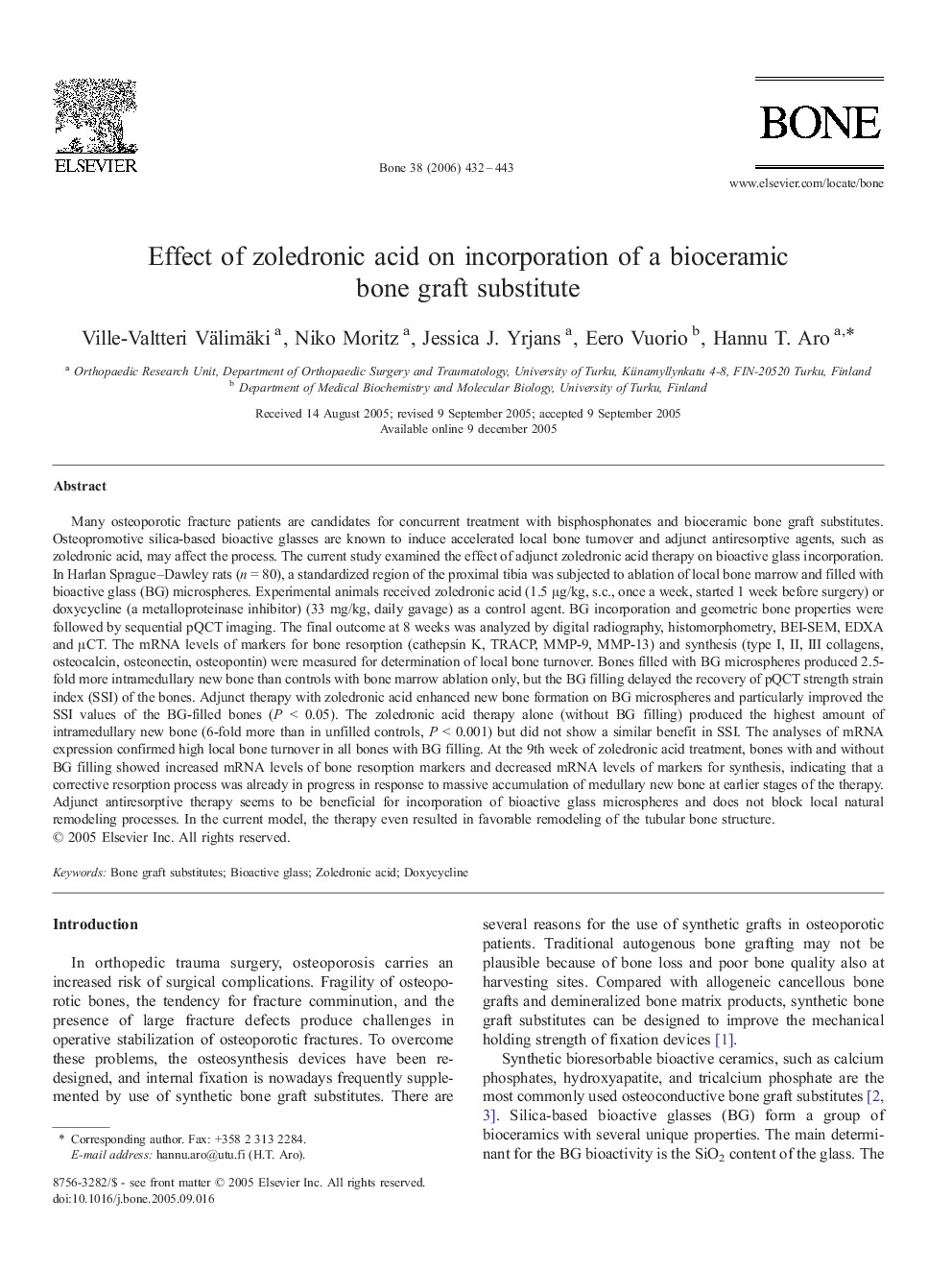| کد مقاله | کد نشریه | سال انتشار | مقاله انگلیسی | نسخه تمام متن |
|---|---|---|---|---|
| 2783069 | 1153373 | 2006 | 12 صفحه PDF | دانلود رایگان |

Many osteoporotic fracture patients are candidates for concurrent treatment with bisphosphonates and bioceramic bone graft substitutes. Osteopromotive silica-based bioactive glasses are known to induce accelerated local bone turnover and adjunct antiresorptive agents, such as zoledronic acid, may affect the process. The current study examined the effect of adjunct zoledronic acid therapy on bioactive glass incorporation. In Harlan Sprague–Dawley rats (n = 80), a standardized region of the proximal tibia was subjected to ablation of local bone marrow and filled with bioactive glass (BG) microspheres. Experimental animals received zoledronic acid (1.5 μg/kg, s.c., once a week, started 1 week before surgery) or doxycycline (a metalloproteinase inhibitor) (33 mg/kg, daily gavage) as a control agent. BG incorporation and geometric bone properties were followed by sequential pQCT imaging. The final outcome at 8 weeks was analyzed by digital radiography, histomorphometry, BEI-SEM, EDXA and μCT. The mRNA levels of markers for bone resorption (cathepsin K, TRACP, MMP-9, MMP-13) and synthesis (type I, II, III collagens, osteocalcin, osteonectin, osteopontin) were measured for determination of local bone turnover. Bones filled with BG microspheres produced 2.5-fold more intramedullary new bone than controls with bone marrow ablation only, but the BG filling delayed the recovery of pQCT strength strain index (SSI) of the bones. Adjunct therapy with zoledronic acid enhanced new bone formation on BG microspheres and particularly improved the SSI values of the BG-filled bones (P < 0.05). The zoledronic acid therapy alone (without BG filling) produced the highest amount of intramedullary new bone (6-fold more than in unfilled controls, P < 0.001) but did not show a similar benefit in SSI. The analyses of mRNA expression confirmed high local bone turnover in all bones with BG filling. At the 9th week of zoledronic acid treatment, bones with and without BG filling showed increased mRNA levels of bone resorption markers and decreased mRNA levels of markers for synthesis, indicating that a corrective resorption process was already in progress in response to massive accumulation of medullary new bone at earlier stages of the therapy. Adjunct antiresorptive therapy seems to be beneficial for incorporation of bioactive glass microspheres and does not block local natural remodeling processes. In the current model, the therapy even resulted in favorable remodeling of the tubular bone structure.
Journal: Bone - Volume 38, Issue 3, March 2006, Pages 432–443